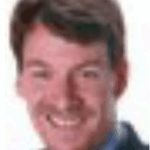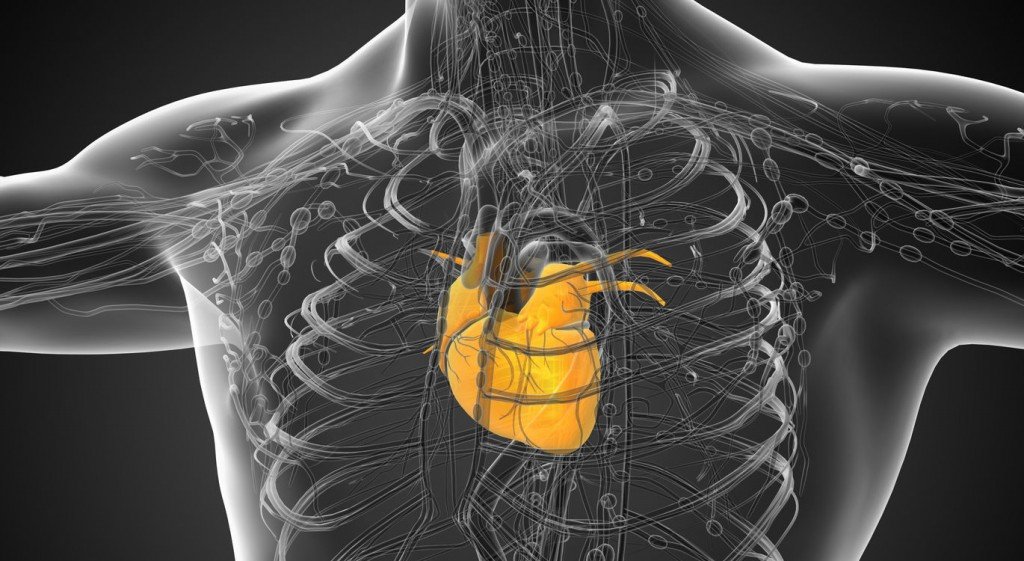Dicken Weatherby, ND
Studies suggest that men have around a 50% lifetime risk of developing coronary heart disease after the age of 40. I’d like to share a relevant case study (abbreviated due to space limitations) that illustrates how natural, or alternative, medicine can alter the course of treatment and give a patient not only an improved outcome but also can return a significant measure of their quality of life. It’s this kind of case that makes me passionate about what I do and what I teach.
Case Study
My father-in-law, Ralph, who is 74, was experiencing some shortness of breath in November 2006, and despite a good result on a stress test by his primary care physician, he decided to consult a well-respected cardiologist. The cardiologist diagnosed the following:
- Weak ventricular muscle
- Mild valve leak
- Many points of arterial blockage, ranging from 20% to 60% on the left side.
He prescribed a calcium channel blocker, felodipine, along with digoxin and lovastatin to lower Ralph’s cholesterol, which was at 245mg/dl.
After seeing the cardiologist, Ralph consulted with Donnie Yance, his clinical herbalist and certified nutritionist, about the cardiologist’s diagnoses and recommendations. Yance was concerned about the long-term, negative side effects of cholesterol-lowering medications. Yance also factored in Ralph’s medical history and current issues, which included endocrine imbalances and chronic lung infections, possibly the result of radiation treatment for throat cancer eight years earlier. He shared his research and ideas with Ralph’s cardiologist, who supported Ralph in trying Yance’s herbal protocol instead of the prescription drugs for a period of time to lower his cholesterol. Within a couple months of solely using Yance’s protocol, Ralph’s cholesterol lowered to 184mg/dl, within the normal range.
In February 2007, Ralph woke one morning having terrible difficulty breathing, and was rushed to the emergency room, where fluid was found in his lungs. Ralph’s white blood cell count on admittance to the hospital was 11.9, and his neutrophils were 8.48, both on the high side. The notes in the chart indicated that ankle edema was absent. After being stabilized and released, his cardiologist diagnosed congestive heart failure (CHF) with pulmonary edema and prescribed several medications, including spironolactone. Again, Yance persuaded Ralph that these were not necessary or, at least, not on a long-term basis. Based on symptomology, history and blood test results, Yance also disagreed with the CHF diagnosis. Yance thought chronic lung issues were the primary cause and have been affecting Ralph’s heart. Adding this to the fact that Ralph’s white blood cell and neutrophil counts were high the night he went into the hospital, along with no evidence of ankle edema, as well as Ralph’s report that he’d been feeling sickly and fatigued after a recent trip, Yance came to the conclusion that Ralph was suffering from an upper respiratory infection. Yance determined that this, rather than a heart-related blood pressure rise or an arrhythmia, had caused the pulmonary edema. In Yance’s view, Ralph’s event was an acute episode, not a chronic one.
Based on this assessment, Yance suggested that Ralph stop the digoxin and replace it with Convallaria majalis, a well-known heart tonic Yance considers superior to digoxin for long-term use. He also wanted to reassess the need for Ralph to stay on spironolactone, suggesting that Ralph go on Crataegus extract for its blood-pressure lowering effect.
Yance made sure Ralph was willing to take his own blood pressure daily and repeat an echo-cardiogram and EKG, so that everything was being closely monitored as he came off the drugs. The cardiologist gave the go ahead, and within a short period of time, Ralph’s blood pressure came down to normal range, along with his cholesterol. He is now taking only one heart medication, as opposed to four, with a very noticeable decrease in side effects. He is no longer suffering from shortness of breath. In fact, he is doing his usual two-mile morning walk in 35 to 36 minutes, vs. the 45 minutes it took while he was suffering from his symptoms. Finally, by the use of herbal remedies and nutritional supplements, including CoQ10, L-carnitine and anabolic botanicals, Yance was able to strengthen Ralph’s ventricle muscle so that his ejection rate went from 46% in November 2006 to 50% in April 2007. My father-in-law is now back to his healthy, hearty, full-life self after a short period during which he really felt his health was taking a major and possibly permanent turn for the worse.
Discussion
This case shows the power of natural medicine, and how much it serves every patient to question even a specialist’s opinion and broaden the diagnosis spectrum. It also beautifully illustrates the use of two of what I call the Four Quadrants of Functional Diagnosis; in this case, blood chemistry numbers and looking at signs and symptoms to diagnose and treat. Yance took into consideration Ralph’s white blood cell and neutrophil counts as well as some of the symptoms and his health history, and used them to differ with the cardiologist’s diagnosis of CHF. We know from scientific studies that people often see what they are looking for, so it’s not surprising that a well-trained cardiologist would see heart disease in a patient with symptoms that could fit that profile. Thankfully for Ralph, his clinical herbalist looked at the constellation of what was happening and saw a very different picture. Imagine the difference between hearing you have “congestive heart failure” and hearing you were reacting to an upper respiratory infection. The effects on a patient’s emotional state, which we know influence healing, cannot be overstated. It’s disheartening to think of the thousands of cases where a patient does not have the inclination or means to seek a second opinion from a more holistic medical practitioner. The loss of health, well-being – not to mention the financial waste – cannot be measured.
On the brighter side, Ralph’s cardiologist was open to hearing from a clinical herbalist/certified nutritionist, a trend in medicine that we can only hope continues to grow. Having teams of health practitioners collaborating on cases seems to be an effective way to cover the bases and give patients choices about their care. It may be more expensive in the short term, but when we think of the money Ralph will save himself and his insurance company by not spending years on expensive drugs and treating the side effects they would almost certainly inflict, not to mention the years and quality of life Ralph will gain, it seems like the obvious direction to take.
 Dicken Weatherby, ND is based in southern Oregon. A graduate of NCNM, Dicken is co-author of the bestselling book Blood Chemistry and CBC Analysis-Clinical Laboratory Testing from a Functional Perspective. He has self-published seven other books in the field of alternative medical diagnosis, has created numerous information products, and runs a number of successful Web sites (www.BloodChemistryAnalysis.com, www.Health-E-Marketing.com and www.StrawBale.com). He is involved in research, writing and consulting, and teaches functional diagnosis seminars in both the U.S. and his native country, the U.K.
Dicken Weatherby, ND is based in southern Oregon. A graduate of NCNM, Dicken is co-author of the bestselling book Blood Chemistry and CBC Analysis-Clinical Laboratory Testing from a Functional Perspective. He has self-published seven other books in the field of alternative medical diagnosis, has created numerous information products, and runs a number of successful Web sites (www.BloodChemistryAnalysis.com, www.Health-E-Marketing.com and www.StrawBale.com). He is involved in research, writing and consulting, and teaches functional diagnosis seminars in both the U.S. and his native country, the U.K.





